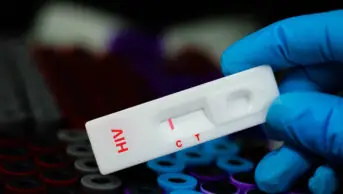Pharmacy is well known as a life-saving profession and, in reality, the practice of pharmacy today plays a vital role in the delivery of healthcare services. Pharmacists as healthcare professionals have detailed knowledge of medicines, their actions and interactions with the body. Pharmacists are an important part of the community because they contribute to the health and welfare of the patients and residents.
This profession has to achieve health outcomes while ensuring the safety, efficacy and appropriate use of medicines. The PharmD curriculum is designed to prepare students to be practice-ready upon arrival at their experimental sites and, ultimately, undergo robust clinical and professional growth during their patient-care encounters and research activities[1].
The pharmacy curriculum in Pakistan is in its infancy. Although the basic requirements for practising pharmacy in Pakistan is equivalent to those in advanced countries — where the profession has successfully embraced the change within the pharmacy profession — this region is facing identity crises. The causes of this include the lack of an updated pharmacy curriculum and standard training facilities, as well as a lack of recognition among other health workers, internships and residency training[2].
Although revised in 2013, the pharmacy curriculum in Pakistan still lacks the power to provide anecdotally[3–5].
Some of the possible solutions to the problem could be:
- The pharmacy curriculum in Pakistan should be updated and accredited periodically according to international standards;
- The course should be divided into two stages: the first stage includes academic study for five years, and the second stage should introduce internship and residency training that involves pharmacy practice. After completing the course, students have gained skills in diagnosis, therapeutics usage of drugs, treatment and selection of disease;
- There should be a combined therapeutics training session, anchored by problem-solving with a focus on the patient, from which pharmacy and medical students can expand their understanding of the other profession’s knowledge and scope. This would be beneficial in building trust among other healthcare professionals.
Abdul Wasay Sherazi, pharmacist
- 1Yee GC, Haas CE. Standards of Practice for Clinical Pharmacists: The Time Has Come. Pharmacotherapy. 2014;34:769–70. doi:10.1002/phar.1450
- 2Meeting of the Pharmacy Council of Pakistan was held on 3rd October, 2013 at Islamabad. Pharmacy Council of Pakistan. 2013.https://www.facebook.com/groups/721661961338372/permalink/722389324598969/?mibextid=Nif5oz (accessed Dec 2022).
- 3Pharmacy Council of Pakistan PharmD Syllabus . Pharmacy Council of Pakistan. 2021.https://www.drsanjayom.com/37/ (accessed Dec 2022).
- 4Ahmed A, Tanveer M, Siddiqui A, et al. Bridging The Gap For Clinical Pharmacist In Developing Countries Like Pakistan. J Coll Physicians Surg Pak. 2018;28:229–32. doi:10.29271/jcpsp.2018.03.229
- 5Pharm D Syllabus 2022 in Pakistan and Course Subjects. Ilmkidunya. https://www.ilmkidunya.com/pharm-d/course-duration-and-study-scheme (accessed Dec 2022).

